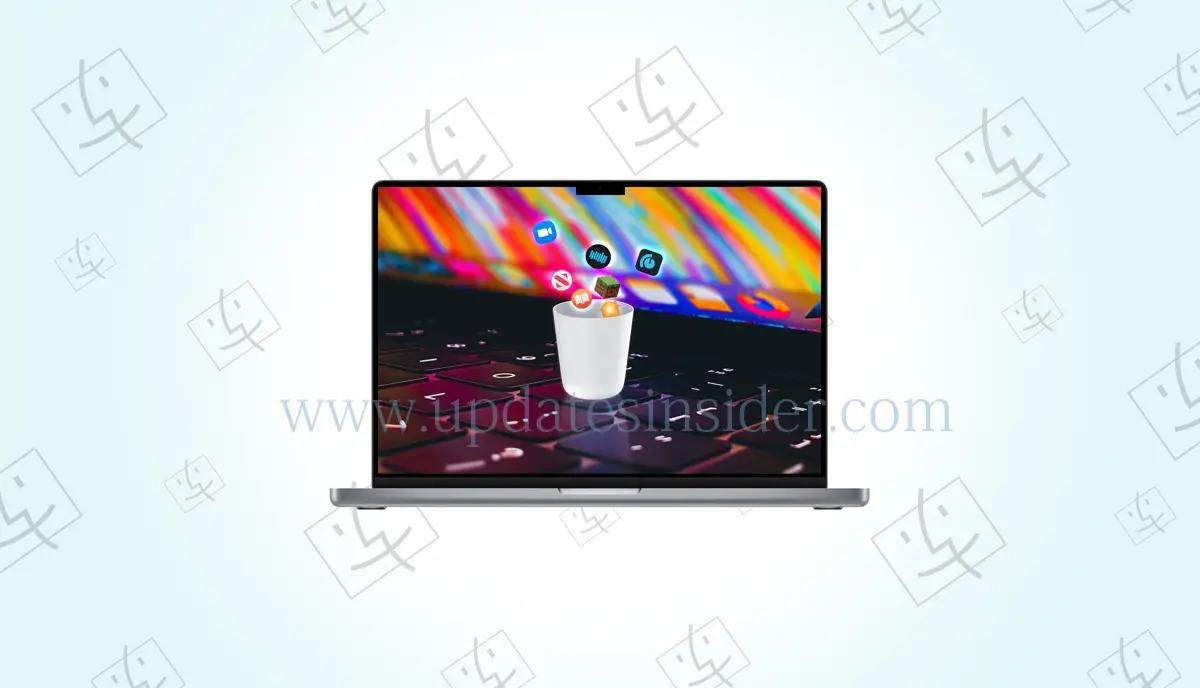Maintaining your Mac’s optimization and smooth operation requires knowing how to remove apps properly. However, only some are aware that this procedure differs based on whether you downloaded the applications online or from the App Store. Everything you need to know about properly uninstalling apps from a Mac is covered in this article. Let’s understand how to delete apps from a macbook.
Why Drag and Drop is Not Enough?
A lot of Mac users think that putting apps in the trash can is the only method to delete them permanently. Unfortunately, that isn’t the case. It indeed removes programs from your device, but it doesn’t delete any connected accounts or remaining information. To prevent Mac clutter, users like us need to get familiar with the proper procedure for removing apps.
How to Delete Apps From a Macbook?
Sometimes, we may use computers for days, weeks, or even years before encountering an apparently straightforward activity for which we need to prepare. If you’ve lately realized that there are certain apps on your Mac that you want to remove, for example, you may be familiar with this sensation. On a MacBook, you can remove an app using Launchpad, Finder, or the app’s built-in uninstaller, among other methods. Although both approaches have the same objective, each is more helpful in certain circumstances.
Here’s how to choose the appropriate approach:
- Launchpad: If you downloaded your program from the program Store, use this approach.
- App-provided Uninstaller: Use this technique if the uninstaller that came with your app was downloaded from the internet or another source.
- Finder: If your software didn’t include with an uninstaller and you downloaded it outside of the software Store, use this technique.
Also Read: MacBook Pro M1 Pro and M1 Max: Everything You Need to Know
How to Delete Apps from a MacBook Through Launchpad?
From the Dock, you may use the rapid launch option called Launchpad. It has all the programs you’ve downloaded from the App Store on it, and if you have an iPhone, you can remove apps using a very similar method.
Here’s how to use Launchpad to remove MacBook apps:
- On your Dock, click the Launchpad icon.
- To remove an app, click and hold it until it begins to shake.
- On the app icon, click the X in the top left corner.
- Your MacBook will remove the program when you click Delete.
How to Delete Apps Using Finder on a MacBook?
Although your desktop may seem like just that, it really runs a program named Finder. The Finder program gives you access to your files, applications, and other functions. You can locate all of your apps, including ones you downloaded from the internet and other sources, under the applications area. If the software you downloaded didn’t come with an installer, you may remove it using Finder.
Here’s how to use Finder to remove MacBook apps:
- Click the Dock’s Finder icon.
- Navigate to Applications.
- To remove an app, right-click on it and choose Move to Trash.
- To proceed, choose Use Touch ID or Face ID, or click Use Password and input your password.
- Select the Trash with a right-click.
- Click Trash Empty.
- To finish the uninstalling procedure and release the space that the program was taking up, click Empty Trash.
How to Delete Apps Using App’s Uninstaller to Remove from a MacBook?
A utility called an uninstaller is installed alongside an application with the intention of completely uninstalling the software. It’s always preferable to use the uninstaller that comes with the software if you want to remove it rather than one of the other options.
Here’s how to use the app’s uninstaller to remove a MacBook app:
- Click the Dock’s Finder icon.
- Navigate to Applications.
- In the Search field, enter uninstall.
- Find your app’s uninstaller and choose it.
- If required, click Open, then adhere to the on-screen instructions to finish the uninstalling procedure.
Also Read: How to Screenshot on Mac?
How to Fully Remove App Files From a MacBook?
When you delete an app from your MacBook, the program itself is gone, but sometimes it leaves other files behind. Most of the time, you can safely leave these files alone, but if your hard disk is becoming short on space, you may wish to delete them. There are a couple methods to do that: either use a free Mac cleanup tool (with an extra, paid version) to detect and remove any residual debris, or search for the files and manually delete them. Use Finder to look for any files connected to the removed program in these places if you wish to remove any residual files manually:
- Library/Application Support
- Library/Internet Plug-Ins
- Library/Preferences
- Library/Application Support/CrashReporter
- Library/Saved Application State
- Library/Caches
Any files you locate may be placed in the trash, which can then be emptied to make room. However, take care only to remove files that are really associated with the removed program; removing files that are used by other applications may result in issues with other apps or potentially unstable system conditions. Unless you are a very experienced user, it is normally advised to keep the residual files in order. It’s far too simple to erase system-required files unintentionally.
Conclusion
It’s simple to delete programs from your MacBook, which may help clear up storage and simplify your system. You may delete undesirable apps with confidence if you follow the instructions in this article. Remember that in order to recover important storage space and prevent leftover data from being left behind, app deletion must be done correctly. Whether you want to remove third-party uninstallers or pre-installed apps, knowing how to remove apps can help you maintain a more organized and clean Mac. Maintaining the functionality and efficiency of your MacBook may be accomplished by routinely checking through and getting rid of any excessive apps.
